2022 Week 4: Family Wellness
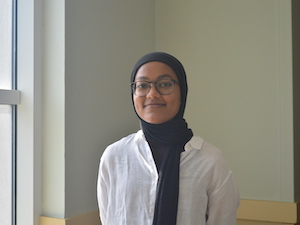 Fatima Elzamzami | Franciscan Center
Fatima Elzamzami | Franciscan Center
One of my goals this summer was to learn more about homelessness in the city and what sorts of systemic barriers contribute to it. Before I started work at the Franciscan Center, I had a minimal understanding of this topic. However, with every conversation I’ve had with a client at the Center, I’ve learned more about this issue. There are some common themes that have emerged from my conversations, like how there is a lack of affordable housing and jobs that pay a reasonable salary, causing homelessness. A big one, though, that I didn’t know about before working the Franciscan Center was how important obtaining an ID was in overcoming homelessness. Without an ID, you cannot get a job, car, house etc., however, the process for obtaining one is extremely convoluted, especially if you don’t have your birth certificate or social security card. I also didn’t know how many people became homeless solely because of mistreatment from their landlords. For example, I have spoken with clients who’s landlords didn’t follow the COVID moratorium on eviction, or gave their tenants only two days notice before eviction and (illegaly) placed their furniture on the street. Many of our clients, though, cannot advocate for themselves legally due to the cost associated with filing a lawsuit. I am learning more everyday, and in the coming weeks, I will be visiting one of Baltimore’s largest homeless encampments, Potee. There, I will be working with my supervisors to provide the same services the we provide at the Center. I am looking forward to speaking with people there and learning about how their experiences may differ from those that we see at our office.
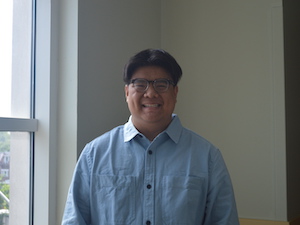 Kobi Khong | Rebuild, Overcome, and Rise (ROAR) Center
Kobi Khong | Rebuild, Overcome, and Rise (ROAR) Center
My goals for the summer are still aligned with the ones that I started with, there’s still so much more of Baltimore to explore and so much to learn. I’m going to continue focusing on the growth of knowledge and experience in assisting people with trauma as well as gaining appreciation for Baltimore city and the organizations that help the community. I want to be able to expand my knowledge about assisting people with overcoming trauma and better understand the impact of crime and violence on members of Baltimore City.
Due to some circumstances outside of our control (condensation & covid) I haven’t been able to table in person at an event in person yet, so in some ways I feel as if I haven’t yet fully had the chance to fully explore the community. On Friday this past week, I visited the ROAR Center offices for the first time at the University of Maryland Baltimore. It was nice to see my supervisor in person and there I picked up a table and some handouts to be prepared for the events that we will be helping contribute to for the coming month.
Being an active citizen is also ingrained in the projects and work that I have set for myself within the organization, by creating the opportunity where I am required weekly to go outside of the Hopkins campus to directly engage with members of the community on behalf of ROAR, I expand my horizons of familiarity. It is very easy to be a student at Hopkins for four years and never travel outside of campus, let alone the white L that also dominates boundaries in Baltimore and by collaborating with nonprofits and community based organizations along with finding events in communities that are under-served, I also have the chance to experience the variety of cultures that makes Baltimore the city of neighborhoods.
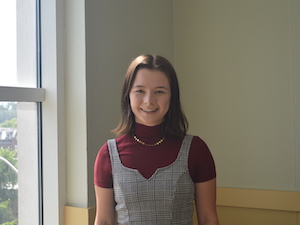 Maddy Kye | Episcopal Refugee & Immigrant Center Alliance
Maddy Kye | Episcopal Refugee & Immigrant Center Alliance
My goals for the summer have been relatively consistent over the course of the past month, but I am encountering a new challenge in determining how to best quantify them. Two of my main goals were to interact directly with ERICA participants, which I have been doing, and to feel more informed about current issues in immigration because of research and experience from working at ERICA. I believe that I have made significant progress towards these ends, based on the amount of time I have put in, but I have been struggling to see exactly what I have done.
For example, I have done a lot of reading on immigration issues, in Maryland and in the US more broadly, and though I have notes that will ultimately be transformed into a website page, until these notes are actually formatted into a website page, it will likely continue to be difficult for me to see what I have done other than read.
Over the course of the next few weeks, I plan to organize my main projects at work into ones with clearer milestones and schedule more “check-ins” with my supervisor to make sure I am on the right track. I intend to set clearer, intermediate goals to avoid ending the summer lacking finishing touches.
One other thing I would like to touch on in this blog post was the difficulty I faced this week adjusting back to my schedule after the long weekend. Especially because I worked remotely Tuesday, switching back to in-person was definitely a bit jarring. While I know there are benefits to working remotely, I found it rewarding to be back in the office for the second half of the week and am glad that I will predominantly be in-person going forward.
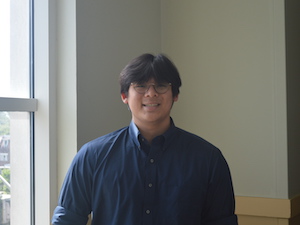 Jonathan Lee | Court Appointed Special Advocates (CASA) for Children of Baltimore
Jonathan Lee | Court Appointed Special Advocates (CASA) for Children of Baltimore
This week, I spent a lot of time working on developing a survey for our volunteers. My goal is to get an idea from volunteers, based on their experiences, on what youth in foster care would need. For CASA of Baltimore, each volunteer is given 1 to 2 youth to work with. Volunteers aren’t given too many cases because they spend a significant amount of time getting to know families and youth in order to advocate for the child’s best interests. In addition to bridging the gap between families and the Baltimore City Department of Social Services, volunteers recommend resources for both parents and children. For example, besides resources that provide financial assistance, I’ve learned that a lot of youth ask for career readiness and life skill advice. From our volunteers, I’m expecting that similar resource types will be brought up; however, I’m hoping that they can provide additional examples. It’ll also be a great way to gauge how volunteers want to receive the resource guide. In the survey I gave a “choose all that apply option” that includes putting the guide online, distributing a pdf version via email, or just giving every volunteer a copy during training.
Moving forward, I’m excited for what I have planned with CASA for the rest of summer. My supervisor wants me to become more involved with the community, so I’ll be participating in a pop-up recruitment event in a nearby neighborhood. Additionally, I’m starting to plan a volunteer appreciation event that we will host at the end of summer. As a resident advisor on campus, I’m used to planning events for sophomore college students. Now, I’ll have to think about what adults want, which is definitely a new experience. Overall, I’m excited for what the next 4 weeks have in store.
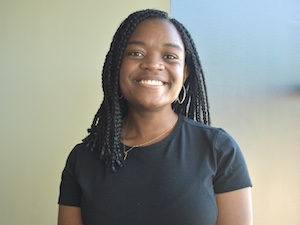 Koye Oputa | BCPS Special Education
Koye Oputa | BCPS Special Education
Behind every academic or professional goal of mine is a healthy habit. I am learning this the hard way.
For example, I want to read more papers on Williams Syndrome and the hippocampus this summer. This has meant cutting down on TV and consumption and reading more books to improve focus and to avoid binging Criminal Minds episodes.
I want to focus more when working with the kids at my site. This has meant eating a nourishing breakfast, and sleeping on time.
I want to find a research lab with work that centers on some of the developmental disorders that I’ve been working with onsite and academically. This has meant time management, or fighting the urge to take a very unnecessary 6 PM nap.
Nearly all my life goals—academic, professional, and personal—rely upon healthy habits. However, it can be hard not to look at healthy habits as time hogs. After spending 8 hours of my day out and working, and knowing that I have about 5 hours to myself before I need to sleep, it feels easier to choose a protein bar over spending an hour or two prepping healthy meals. I often convince myself it’ll be more rejuvenating to squeeze in two hours of Netflix rather than working out. Such thinking has not worked for me.
I’ve accepted that healthy living will consume a great deal of my time–sometimes all of the 5 hours I had left to myself after the workday. So, I am learning to take greater joy in prepping dinner by making old favorites, making up new routines to get to sleep by 10 PM, and walking to new places as my exercise.
In summary, all my goals have been greatly simplified to improving my health. I’m excited: I trust this is the making of something good.
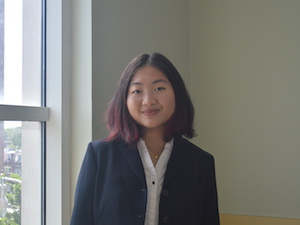 Estelle Yeung | Baltimore Harm Reduction Coalition
Estelle Yeung | Baltimore Harm Reduction Coalition
This past week, I went on outreach with BHRC’s services team at our Maryland Avenue site and conducted surveys with participants along with a coworker. The purpose of our summer survey project is to understand how participants feel about services and which supplies are most helpful or unhelpful to them. The survey also has demographic questions and this year, a few questions are about participants’ experiences with homelessness and finding case managers. This can help BHRC improve their services to better meet the needs of participants. My responsibilities this summer include helping with the staffing schedule for surveyors, coding the data, and data analysis.
For me, it was really heartwarming to see how participants felt about BHRC. One participant I surveyed said that BHRC staff show him “much love” and that he really appreciates how caring the staff are. Participants were really kind about taking a few minutes to complete the survey, and they were very genuine about their appreciation for BHRC.
It’s amazing that participants are able to obtain naloxone, sterile equipment and other safer use supplies from BHRC at no cost, due to BHRC’s status as a syringe service provider with the Maryland Department of Health. Other supplies we give out include hygiene kits, snack bags, water, and menstrual products. Through the surveys, I learned that many participants rely on BHRC because it’s the only place where they can obtain such supplies.
However, this made me realize how integral such needle exchange programs are, because they can really make a difference for people who use drugs and their peers. For rural communities and those in areas without a syringe service provider like BHRC, harm reduction resources are scarce. This also made me think about the responsibility of the government in providing social interventions, rather than nonprofits that end up taking on that role. Most nonprofits rely on grants for their funding, but what happens if a grant isn’t approved or money is reallocated? Where will local communities obtain critical safer use supplies and naloxone?
